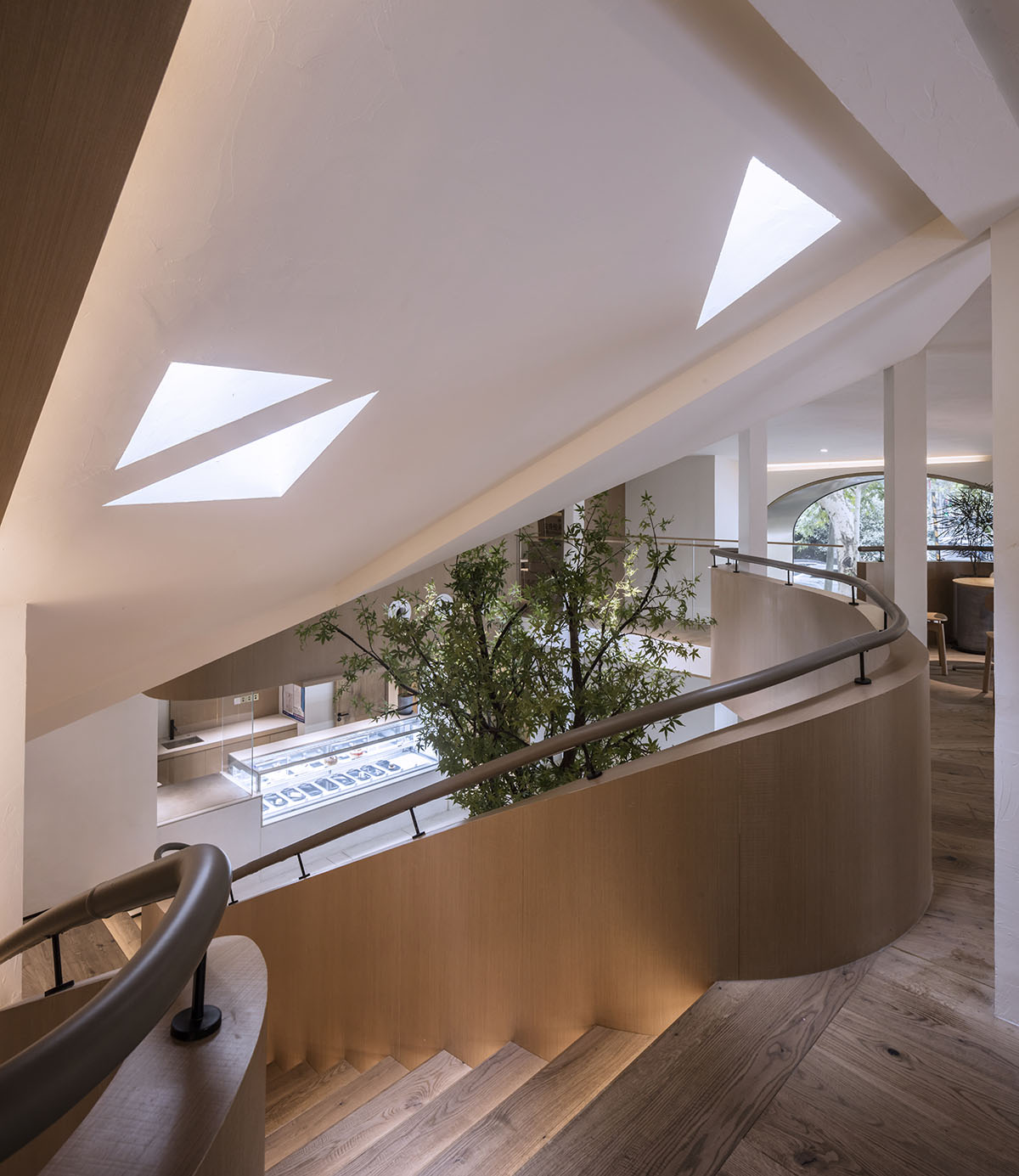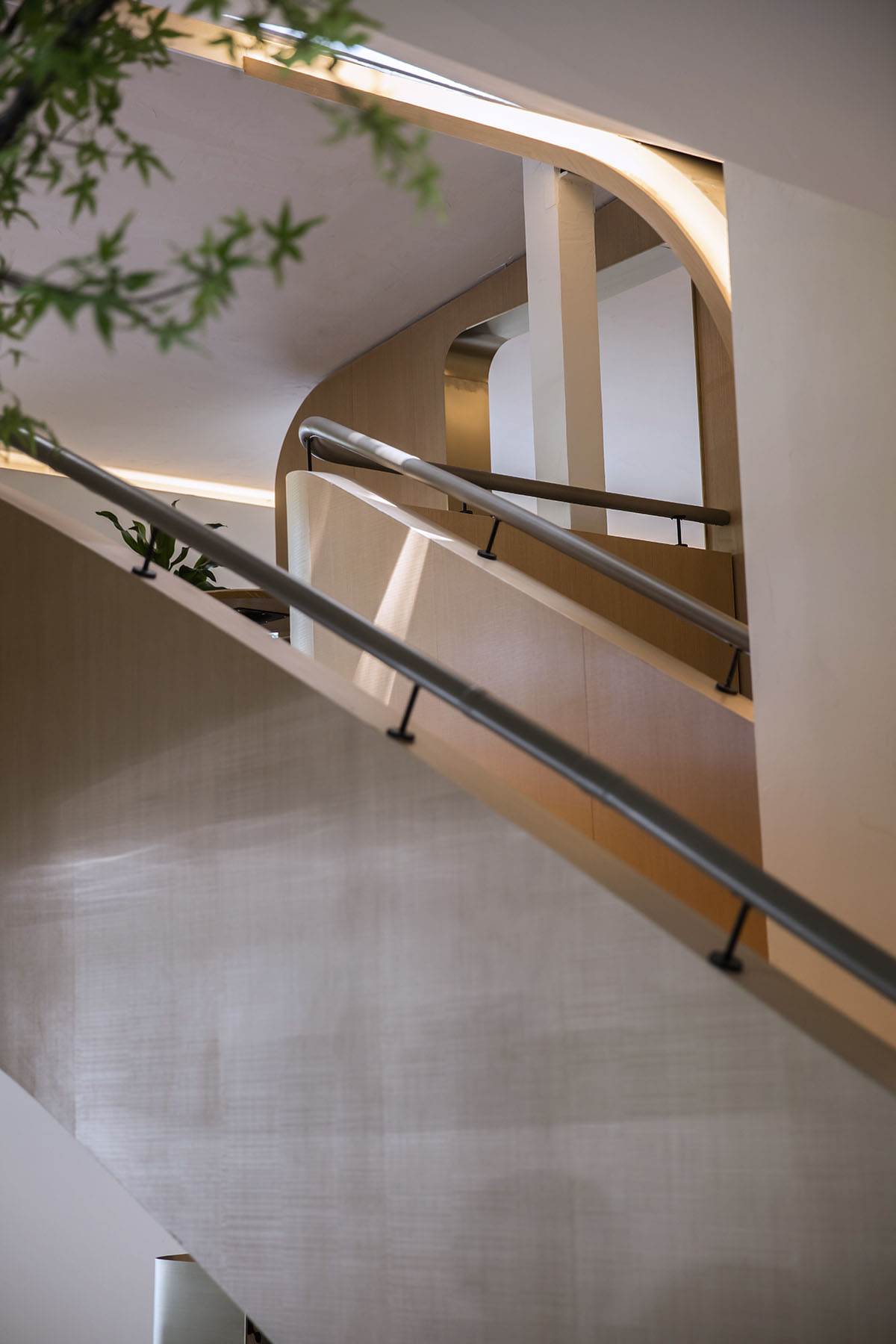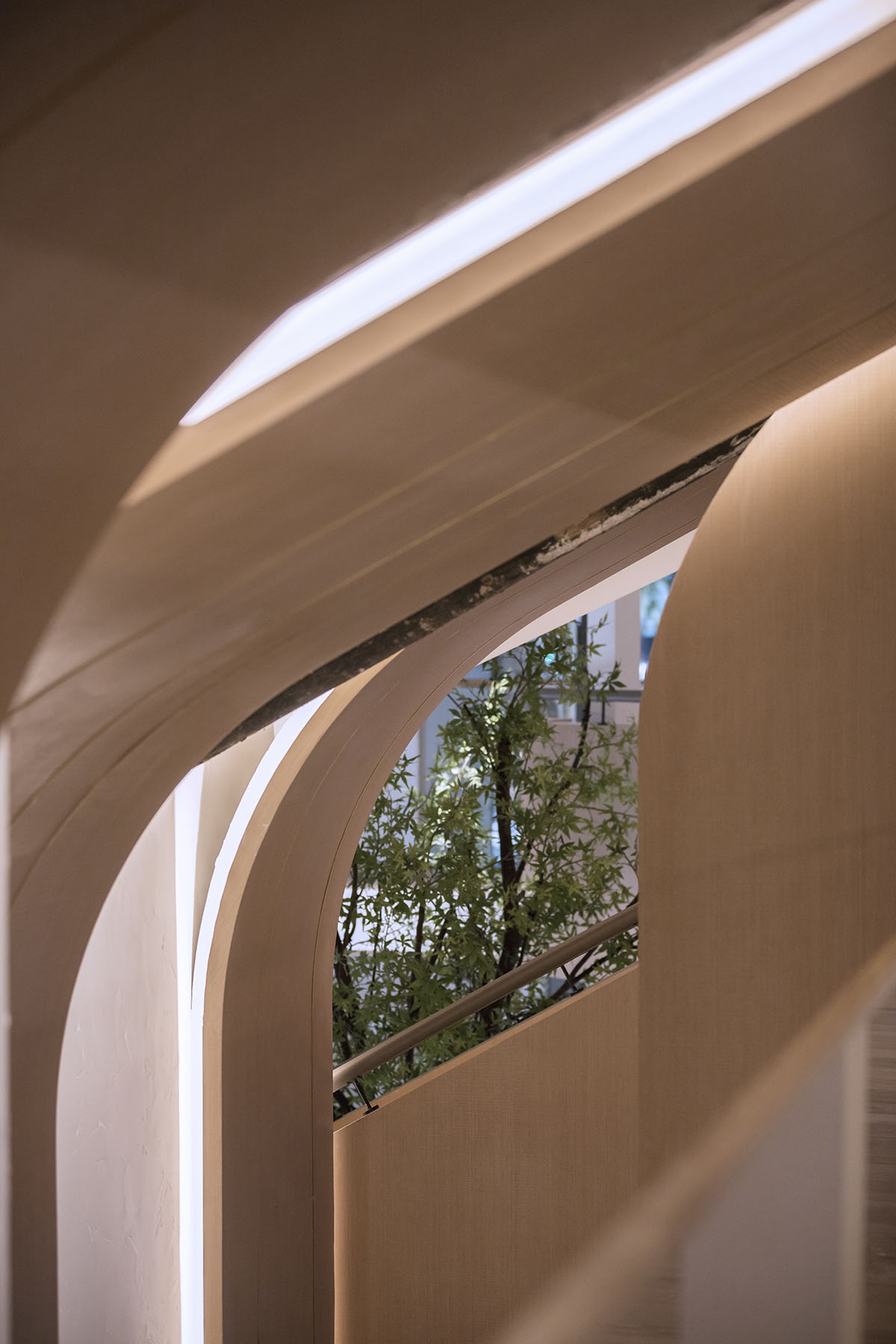Submitted by WA Contents
WJ Design combines dark facade with arched glass windows for pastry store in Hangzhou
China Architecture News - Apr 17, 2020 - 14:32 10842 views

Chinese design practice WJ Design has combined dark facade with arched glass windows for a pastry store in Hangzhou, China.
Named ANSHUKA, the store was founded in 2010 on Nanshan Road, Hangzhou, next to the famous West Lake.
It is named after the owner’s name "An", meaning "kindness". It is the first Western-style pastry store to bring semi-cooked cheese products into China, leading the domestic market, and it has been recognized by customers for nearly ten years.

The store presents pretty much low-scale structure but features a dynamic interior space inside with its sculptural golden-staircase and pastel-toned details.

"When designer Leo HU talked about the inspiration for ANSHUKA, he mentioned that when he was walking on Nanshan Road, the leaves of the phoenix trees were dancing on both sides," said the office.
"It felt very good and quiet to walk in the shadow. And he was thinking about how to present the building in such an environment."
Nanshan Road is familiar to people in Hangzhou, and the memory of the phoenix tree is always with peace. The fast pace of modern urban life makes it easy for people to ignore small tiny nice things around them.

The designer hopes that ANSHUKA can make a space where people are willing to slow down and stay, to feel the life for a while, even if it is just for a cup of afternoon tea or for a dessert.
In the overall renovation of ANSHUKA, the designer transforms the original milky yellow simple wall into a dark facade, supplements by a golden frame, so that the whole building can echo to the surrounding environment and blend perfectly.

He uses white and wood as the main tone to create a more natural bright feeling. In order to attract more attention and people, he makes the best use of the large arch-shaped floor windows to solve this problem appropriately. Whether at dusk or at night, the indoor activities reflect through the window have become a beautiful scenery on the street.

The arched glass that extends from the first floor to the second floor reflects the lush phoenix trees along the roadside. The entire building's facade becomes alive covered with different coats as natural as it.
Throughout the design process, the designer uses simple materials to echo the pursuit of ANSHUKA in the ingredients. Therefore, he uses wood and metal materials in interior space. The ultimate goal of doing subtraction in interior space is to highlight the product's presentation. When customers see the product on the shelf, the delicacy of the dessert is as well presented as expected.

The designer uses glass and skylights to conduct sunlight into the room. When it's sunny, when customers are enjoying dessert in the store, they will be surprised to discover that the flowing lights and shadows have become the souls of the whole space; they come from passing pedestrians, street trees, bicycles, passing cars. These interlaced images often bring inadvertent excitement at different times.

When the customers sit down to enjoy their dessert, they may find that all the designs may be casual. While they sit next to the phoenix trees seeing the light and shadow change, they may watch people passing by and see the sunlight through the skylight casts on the plants.
The gentleness of light and shadow makes them forget the passage of time, they lean on the sofa quietly, feeling maybe this comfort is just right.

WJ Design was founded in 2014. The studio said: "Nowadays, aesthetics and style have attracted too much attention from interior designers however, we have a lager vision."
"When we do an interior design project, we think of connections with the architecture, exterior and landscape design."


Image © Fangfang Tian

Image © Fangfang Tian

Image © Fangfang Tian








Analysis diagram

First floor plan

Second floor plan
All images © Qiang Shen unless otherwise stated.
> via WJ Design
